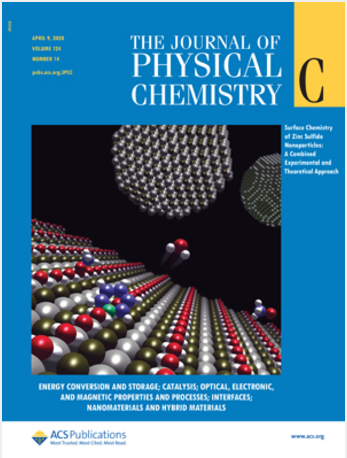PS/ZnO纳米复合材料的热与结构表征:ZnO浓度对分散、热稳定性和降解动力学的影响
IF 3.3
3区 化学
Q2 CHEMISTRY, PHYSICAL
引用次数: 0
摘要
采用透射电镜(TEM)、原子力显微镜(AFM)、x射线衍射(XRD)、拉曼光谱(Raman)、差示扫描量热法(DSC)、热重分析(TGA)和热动力学分析研究了氧化锌(ZnO)浓度(1、5和10%)不同情况下聚苯乙烯PS/ZnO纳米复合材料的热性能和结构性能。TEM图像显示ZnO纳米颗粒分散良好,尺寸在5 ~ 20 nm之间,表明ZnO与PS之间具有良好的相容性。AFM分析显示,表面粗糙度随高度分布在80 ~ 100 nm之间,与观察到的ZnO分散一致。XRD谱图证实了ZnO的掺入,特征峰位于31.71°、34.53°、36.26°,且随着ZnO含量的增加,其他特征峰更加突出。热分析表明,峰值温度(Tp)明显依赖于加热速率,随着加热速率从20°C/min增加到30°C/min, Tp从430.5°C增加到457.6°C。Kissinger法得到的活化能在59.16 ~ 55.77 kJ/mol之间,表明热降解稳定;Arrhenius法得到的活化能稍低,在37.85 ~ 39.84 kJ/mol之间,反映了材料对升温速率变化的敏感性。总的来说,PS/ZnO纳米复合材料表现出增强的热稳定性,显示出需要高热阻的应用潜力。本文章由计算机程序翻译,如有差异,请以英文原文为准。

Thermal and Structural Characterization of PS/ZnO Nanocomposites: Effects of ZnO Concentration on Dispersion, Thermal Stability, and Degradation Kinetics
This study investigates the thermal and structural properties of polystyrene PS/ZnO nanocomposites with varying zinc oxide (ZnO) concentrations (1, 5, and 10%) using TEM, AFM, X-ray diffraction (XRD), Raman spectroscopy, differential scanning calorimetry (DSC), thermogravimetric analysis (TGA), and thermal kinetic analysis. TEM images reveal well-dispersed ZnO nanoparticles with sizes ranging from 5 to 20 nm, indicating a good compatibility between ZnO and PS. AFM analysis shows surface roughness variations with the height distribution ranging from 80 to 100 nm, aligning with the observed ZnO dispersion. XRD patterns confirm ZnO incorporation, with characteristic peaks at 31.71, 34.53, 36.26°, and others becoming more prominent with higher ZnO content. Thermal analysis reveals a clear dependence of peak temperature (Tp) on heating rate, with a notable increase in Tp from 430.5 to 457.6 °C as the heating rate increases from 20 to 30 °C/min. The Kissinger method shows activation energy values ranging from 59.16 to 55.77 kJ/mol, indicating stable thermal degradation, while the Arrhenius method yields slightly lower activation energies ranging from 37.85 to 39.84 kJ/mol, reflecting the material’s sensitivity to heating rate changes. Overall, the PS/ZnO nanocomposites exhibit enhanced thermal stability, showing potential for applications requiring high thermal resistance.
求助全文
通过发布文献求助,成功后即可免费获取论文全文。
去求助
来源期刊

The Journal of Physical Chemistry C
化学-材料科学:综合
CiteScore
6.50
自引率
8.10%
发文量
2047
审稿时长
1.8 months
期刊介绍:
The Journal of Physical Chemistry A/B/C is devoted to reporting new and original experimental and theoretical basic research of interest to physical chemists, biophysical chemists, and chemical physicists.
 求助内容:
求助内容: 应助结果提醒方式:
应助结果提醒方式:


